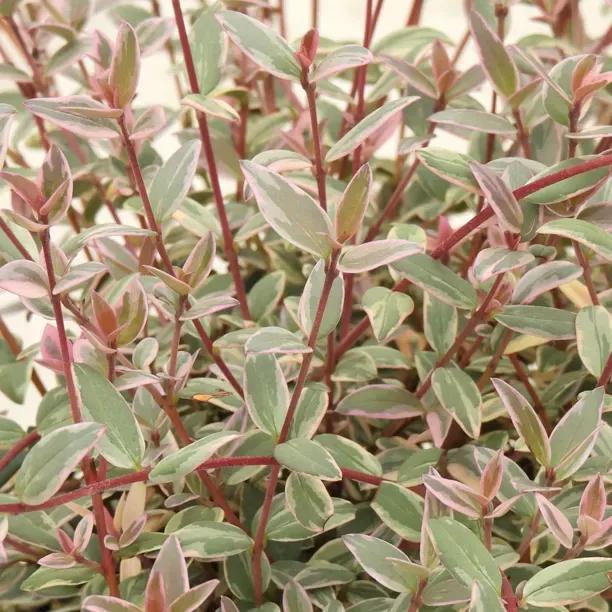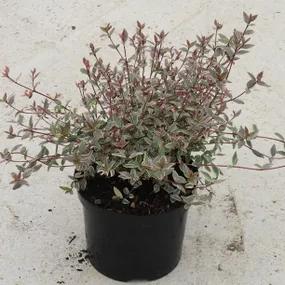Flambeau Chilean Guava Plants
Honest Delivery PricesUgni molinae
- Evergreen
- Variegated green & cream leaves with pink blushes
- Prolific, scented white & pink flowers Jun-Jul
- Edible berries, flavour similar to strawberry
- Slow growing, low maintenance
- Grows on the coast & chalk
- Hardy, but not recommended for the coldest regions of Scotland
- To 1-1.5m
Recommended extras
Description
Flambeau Chilean Guava Plants: Ugni molinae
A charming little evergreen shrub with pale green and cream variegated leaves tinged with pink. The profuse, white and pink flowers in June to July are well-scented and ripen into red berries that are both ornamental and tasty, close to a wild strawberry.
Small, slow growing and low maintenance, it can be used as ornamental hedging up to about one metre.
Features:
- Evergreen
- Variegated green & cream leaves with pink blushes
- Prolific, scented white & pink flowers Jun-Jul
- Edible berries, great aromatic flavour similar to wild strawberry
- Slow growing, low maintenance
- Hardy, but not recommended for the coldest regions of Scotland
- To 1-1.5m
Growing Flambeau Chilean Guava
It prefers close to full sun and likes a fertile moist soil in order to flower well, although it is fairly drought tolerant in general.
The RHS have rated the hardiness as H4, suitable for most of Great Britain, but not recommended for Northern frost pockets and the colder parts of Scotland. It is happy near the coast in a reasonably sheltered location (direct salty winds fresh off the beach may be a bit much for it) and grows on chalk.
Did You Know?
It is native to South America, and was introduced to the UK in 1844, where it became one of Queen Victoria's favourites. Uñi it's name at home; other common names include strawberry myrtle, Ugniberry, and then New Zealand cranberry. It is in the myrtle family and was previously called Myrtus ugni. The leaves and seeds are used as tea and coffee substitutes.



